Second Lieutenant Franklin Herbert Carter
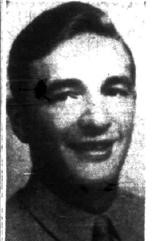
- Unit: 29th Infantry Division, 175th Infantry Regiment, 2nd Battalion, Company E
- Service Number: O-1324142
- Date of Birth: June 30, 1917
- Entered the Military: May 28, 1942
- Date of Death: June 26, 1944
- Hometown: Rocky River, Ohio
- Place of Death: near Lison, France
- Award(s): Purple Heart
- Cemetery: Plot I, Row 23, Grave 30. Normandy American Cemetery, Colleville-sur-Mer, France
Mentored by Mr. Frank O'Grady
Rocky River High School
2015-2016
Early Life
Franklin Herbert Carter was born on June 30, 1917, in Oak Park, Illinois, to Hulda and Russell Carter. Russell and Hulda were married on September 19, 1916. Franklin Carter had two sisters – Gertrude Anne, a year younger, and his youngest sister, Norma, born in 1928.
According to the 1930 census, his family lived in Oak Park, Illinois, and his father worked in food sales. In the mid-1930s, Franklin Carter’s parents were divorced. Russell Carter then married Mabel L. Webb on April 2, 1934, in Cook County, Illinois. After their marriage, they moved with young Franklin Carter to Rocky River, Ohio. Franklin graduated from Rocky River High School in 1936.
In his 1936 yearbook, the caption next to his class photo said, “Franklin, like his pal and crony Kluth – hails from Chicago – possessing a low and dangerous voice.” His yearbook caption continued, “Frank dresses in excellent taste and is conservatively impressive.”
The 1940 census lists Russell Carter renting a home with his wife Mabel and 22-year-old Frank on Center Ridge Road near Rocky River, Ohio. Hulda lived in Chicago with her youngest daughter, Norma, and two boarders. Franklin enlisted in the U.S. Army on May 28, 1942. Carter worked at Western Electric Incorporated at the time he enlisted.
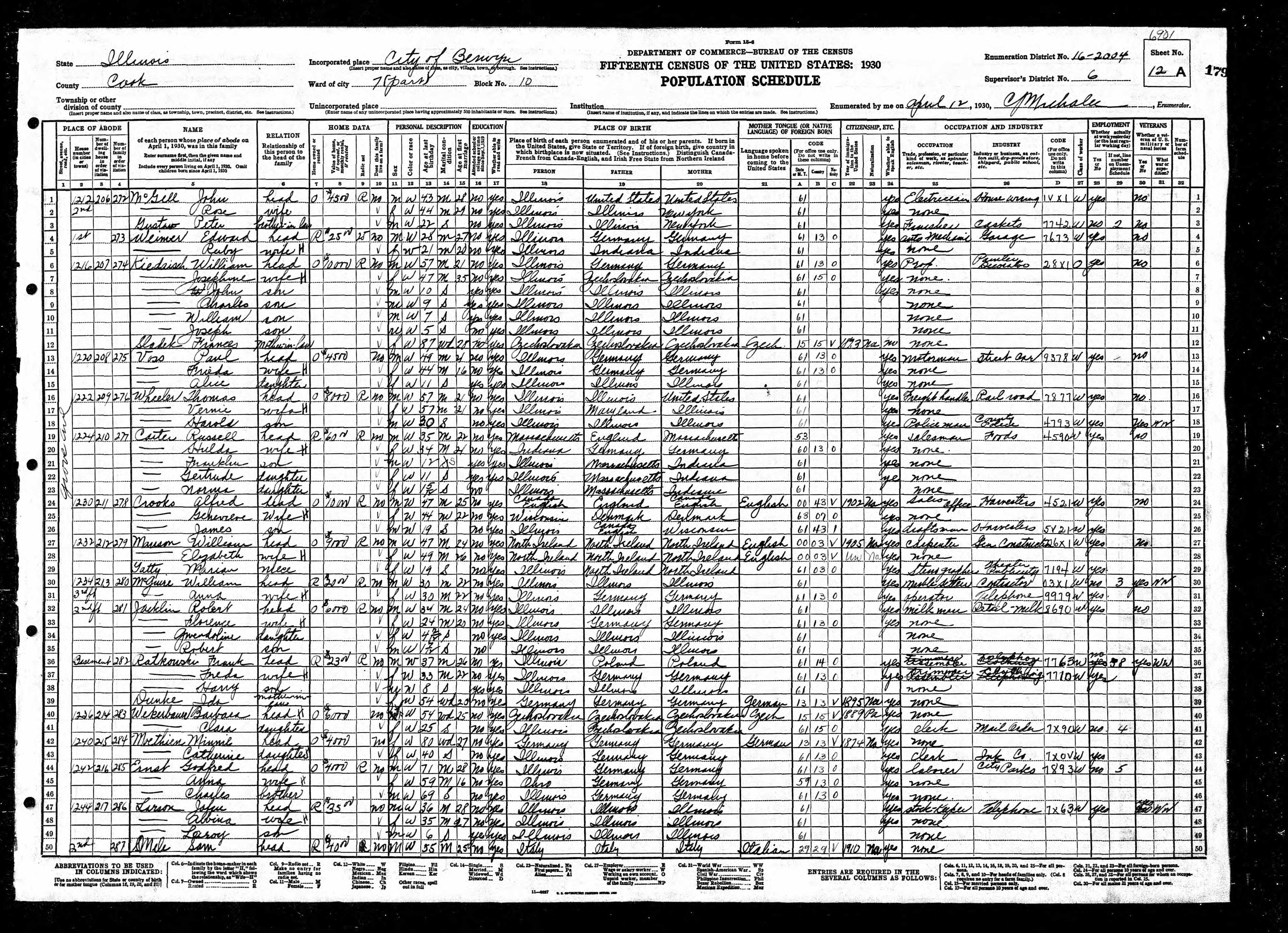
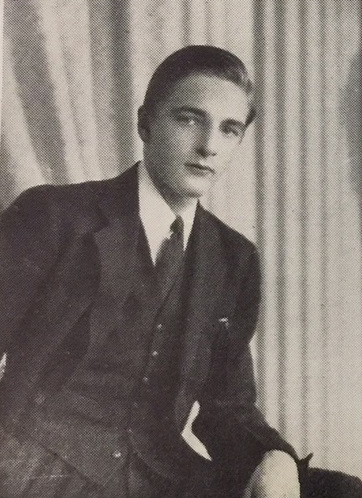
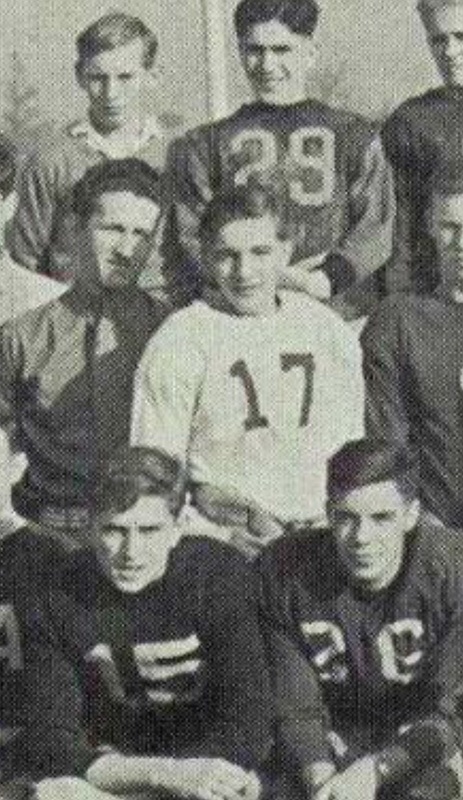
Homefront
Local companies in Greater Cleveland, Ohio, underwent dramatic transformations during World War II. The Thompson Aircraft Products Company was a defense engine plant that employed 21,000 people in Euclid, a Cleveland suburb. The GM Fisher Body Aircraft Plant near the airport became known as the “bomber plant,” where my grandmother worked as a secretary. At this plant, they made parts for B-29 bombers.
In the summer of 1942, local Cleveland papers reported collecting grease and fats and hundreds of Cleveland families planting “victory” gardens. Also, tin cans, metal scrap, and paper drives collected these items through schools. Children also collected milkweed pods for life jackets.
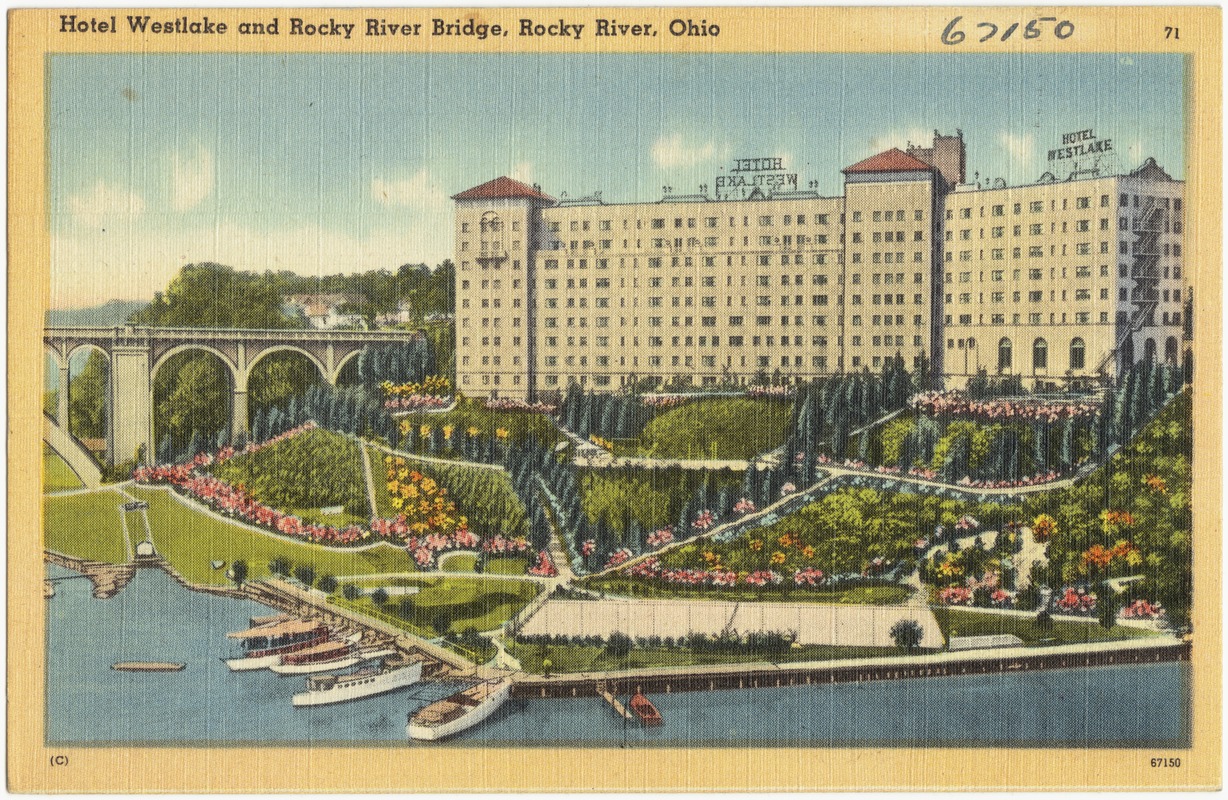
Military Experience
Carter was drafted into the military on May 28, 1942, and assigned to the 29th Infantry Division. He trained at Fort Benning, Georgia, where he met his wife, Irene Mamie Akins, before going to Great Britain.
Most of the 29th Infantry Division landed on Omaha Beach on June 6, 1944. However, debris and overpopulation on the beach forced the 29th Infantry Division Headquarters Company and the 175th Infantry Regiment to stay at sea overnight. Carter landed in Vierville-sur-Mer on June 7, 1944. After D-Day, in an undated letter, Carter wrote a letter to his father from “somewhere in France.” He said he was “alright,” and that the “big show is on.” The unit advanced off the beaches to Isigny and Lison, pushing toward Saint-Lô, France.
29th Infantry Division morning reports on June 20, 1944, stated that Second Lieutenant Carter was re-assigned from the 29th Infantry Division Headquarters Company to serve as a platoon leader with the 29th Infantry Division, 175th Infantry Regiment, 2nd Battalion, Company E. Just six days later, morning reports listed him as KIA (killed in action) on June 26, 1944. Research at the National Archives and Records Administration showed an early morning German counterattack from midnight to 2:00 a.m. on June 26, 1944, that resulted in 17 killed and 25 wounded. The Report of Burial states Carter’s place of death as the 29th Infantry Division combat area and cause of death as a GSW (gunshot wound) in the line of duty.
On July 30, 1944, a telegram was sent to Russell Carter telling him that his son was killed in action. On January 10, 1945, a letter was sent to the War Department from his sister, Gertrude, asking for his personal effects and information on how he died and where he was buried. The letter asked for “any information about how he died,” as his sister pleaded that “his father Russell was in great shock…he and Frank were such pals it has hit him doubly hard.”
A letter from the War Department dated April 14, 1945, informed his sister Gertrude Soldat that Second Lieutenant Carter was interred in the U.S. temporary Military Cemetery, La Cambe, France, Plot H, Row 1, Grave 16. On June 7, 1949, his father, Russell Carter, confirmed that his son should have his final burial overseas. In September 1949, a letter was sent to Russell Carter from the War Department with Carter’s final gravesite at the Normandy American Cemetery at Plot I, Row 23, Grave 30.
Second Lieutenant Franklin Carter, U.S. Army – our Silent Hero – was awarded the Purple Heart.
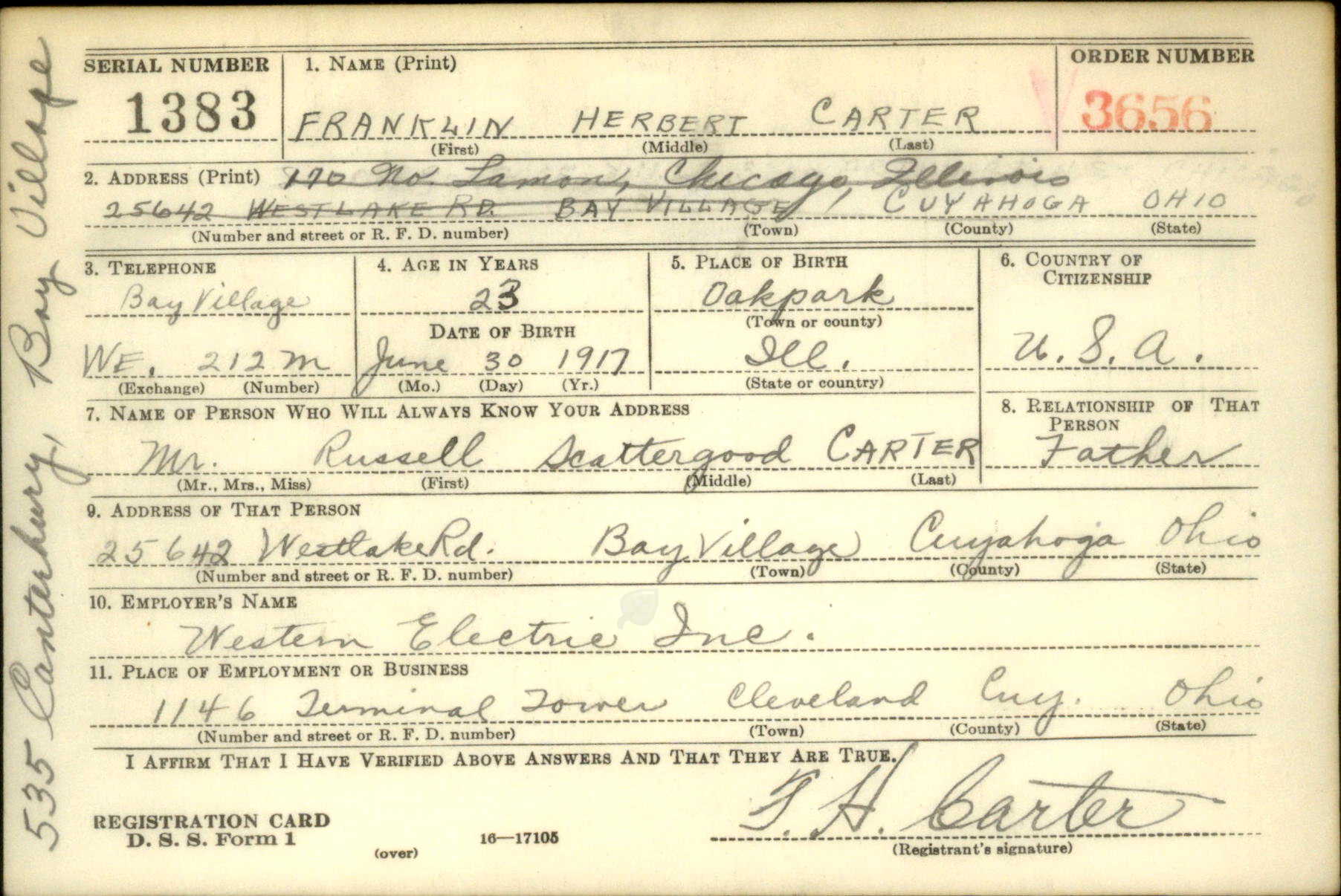

Eulogy
Franklin Carter was an officer in the 29th Infantry Division, 175th Infantry Regiment, 2nd Battalion, Company E that landed on Omaha Beach as part of the third wave on the morning of June 7, 1944. His wife, Irene, and his father continued to live in our town of Rocky River, Ohio, while Franklin served in the U.S. Army.
In addition to honoring our Silent Hero, we also honor all the families who have paid such a great sacrifice.
Second Lieutenant Carter’s sacrifice touched more than just who knew him. Regimental leaders understood the sacrifice that men would make for honor. Robert Wolverton gave this message to his troops: “In a few short hours we will be in battle with the enemy. We do not join the battle afraid. We do not know what our fate will be. We ask only this- that if die we must, without complaining- without pleading- and safe in the feeling that we have done our best for what we believe was right.”
On behalf of our entire school community at Rocky River High School in Rocky River, Ohio, we honor the memory and service of our Silent Hero, Second Lieutenant Franklin Carter, U.S. Army, for his last full measure of devotion to his country.
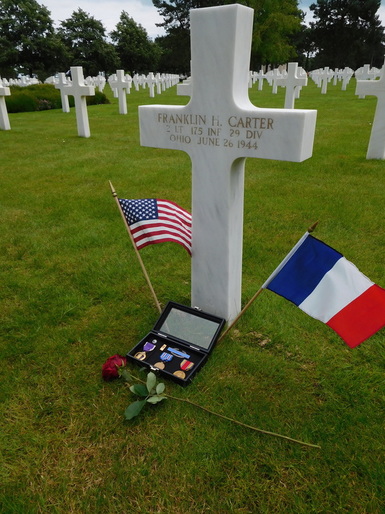
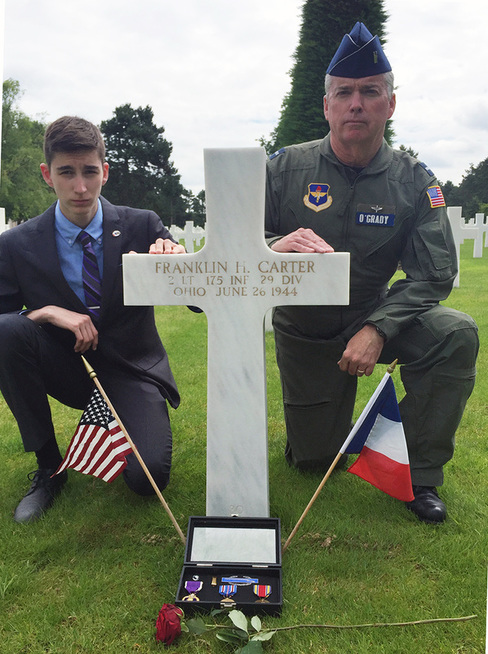
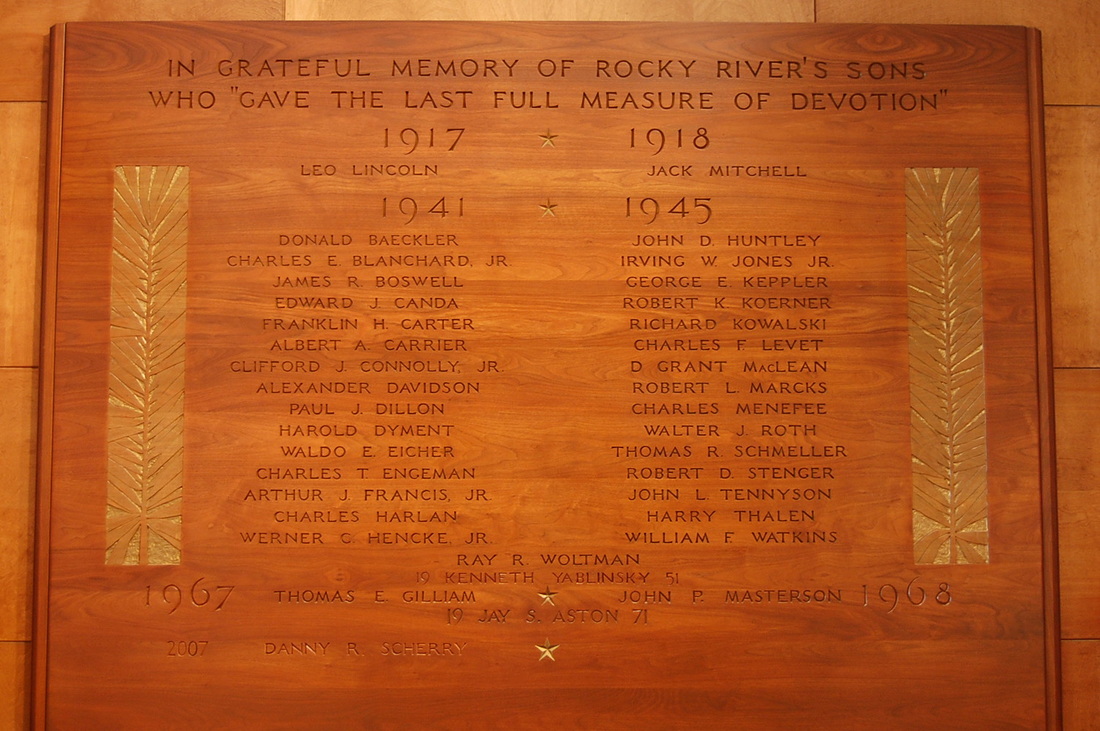
Reflection
The Normandy: Sacrifice for Freedom® Student & Teacher Institute was a fantastic opportunity to study Operation Overlord’s history. The eulogy that I wrote for Carter is something I will hold close to my heart to honor him for his sacrifice. I will continue to tell his story and honor him as I know my teacher, Mr. O’Grady, will, too. Second Lieutenant Carter has become a part of who I am, and his story is something I will remember for the rest of my life.
Bibliography
Primary Sources
Cleveland Plain Dealer Archive. Cleveland Public Library.
Franklin H. Carter. Headstone and Interment Records for U.S. Military Cemeteries on Foreign Soil, 1942-1949. Digital images. ancestry.com.
Franklin H. Carter. Individual Deceased Personnel File. Department of the Army.
Franklin H. Carter. Official Military Personnel File. National Archives and Records Administration – St. Louis.
Franklin Herbert Carter. Cook County, Illinois Birth Certificate Index, 1871-1922. ancestry.com.
Franklin Herbert Carter. World War II Draft Cards Young Men, 1940-1947. Digital images. ancestry.com.
Hemingway, Ernest. Voyage to Victory: An Eyewitness Report of the Battle for a Normandy Beachhead. New York: Collier’s, 1944.
Hotel Westlake and Rocky River Bridges, Rocky River, Ohio. Postcard. C.1930-1945. The Tichnor Brothers Collection, Boston Public Library (67150). www.digitalcommonwealth.org/search/commonwealth:fn107883g.
Illinois. Cook County. 1920 U.S. Federal Census. Digital images. ancestry.com.
Illinois. Cook County. 1930 U.S. Federal Census. Digital images. ancestry.com.
Ohio. Cuyahoga County. 1940 U.S. Federal Census. Digital images. ancestry.com.
Riverlet. Rocky River High School Yearbook, 1936.
Russell Scattergood Carter and Hulda Gertrude Silbermann. Marriage License, September 19, 1916. Digital images. ancestry.com.
Secondary Sources
“2LT Franklin Herbert Carter.” Find a Grave. Updated August 8, 2010. Accessed April 6, 2021. www.findagrave.com/memorial/56643084/franklin-herbert-carter.
“29th Infantry Division.” U.S. Army Center of Military History. Accessed April 6, 2021. history.army.mil/html/forcestruc/cbtchron/cc/029id.htm.
“175th Infantry Regiment After Action Report” D-Day Overlord. Accessed April 6, 2021. www.dday-overlord.com/en/battle-of-normandy/after-action-reports/29th-infantry/175th-infantry-regiment.
Ambrose, Stephen E. Band of Brothers: E Company, 506th Regiment, 101st Airborne from Normandy to Hitler’s Eagle’s Nest. New York: Simon & Schuster Paperbacks, 2001.
Ambrose, Stephen E. “Eisenhower, the Intelligence Community, and the D-Day Invasion.” The Wisconsin Magazine of History (Summer 1981), 261-277.
Robinson, Phil Alden, Richard Loncraine, Mikael Salomon, David Nutter, Tom Hanks, David Leland, David Frankel, and Tony To, Directors. Band of Brothers. Warner Brothers. 2002. DVD.
Banks, James and Albrecht, Brian. “Cleveland in World War II.” The History Press (November 2, 2015).
Bradshear, Greg. “Monuments Men and Nazi Treasures.” Prologue (Summer 2013), 12-21.
Buckley, Gail. American Patriots: The Story of Blacks in the Military from the Revolution to Desert Storm. New York: Random House, 2002.
Cohen, Douglas T., Director. Distant Shore: African Americans of D-Day. A&E Network. 2007. DVD.
Eisenhower, Dwight D. Crusade in Europe. Baltimore: The Johns Hopkins University Press, 1997.
“Franklin H. Carter.” American Battle Monuments Commission. Accessed April 6, 2021. www.abmc.gov/decedent-search/carter%3Dfranklin.
Giannini, Ugo. Drawing D-Day: An Artist’s Journey through War. New York: AuthorHouse, 2013.
Gilbert, Martin. The Second World War: A Complete History. New York: Holt, 1989.
Howard, Michael. “A Thirty Years’ War?: The Two World Wars in Historical Perspective.” Transactions of the Royal Historical Society (1993), 171-184.
Kershaw, Alex. The Bedford Boys: One American Town’s Ultimate D-Day Sacrifice. Cambridge: Da Capo Press, 2003.
“Lost to Enemy Action.” Naval History (June 2014): 30-31.
Marshall, S.L.A. “First Wave at Omaha Beach.” The Atlantic (1 November 1960). www.theatlantic.com/magazine/archive/1960/11/first-wave-at-omaha-beach/303365/.
Mauldin, Bill. Up Front. New York: W. W. Norton & Company, 2000.
Osmont, Marie-Louise. The Normandy Diary of Marie-Louise Osmont: 1940-1944. New York: Random House, 1994.
Pyle, Ernie. Brave Men. Lincoln: University of Nebraska Press, 2001.
Reporting World War II: American Journalism 1938-1946. New York: Library of America, 2001.
Ricks, Thomas E. The Generals: American Military Command from World War II to Today. New York: Penguin Books, 2012.
Roberts, Mary Louise. What Soldiers Do. Chicago: University of Chicago, 2013.
Sulzberger, C. L. “Europe: The New Dark Continent.” The New York Times, March 18, 1945.
Symonds, Craig L. “‘The Navy Saved Our Hides.’” Naval History (June 2014): 24-29.
Symonds, Craig L. “Normandy’s Crucial Component.” Naval History (June 2014): 16-23.
Terkel, Studs. “The Good War:” An Oral History of World War II. New York: The New Press, 1984.
Wieviorka, Olivier. Normandy: The Landings to the Liberation of Paris. Cambridge: Harvard University, 2008.
Weinberg, Gerhard L. World War II: A Very Short Introduction. Oxford: Oxford University Press, 2014.
“World War II” Encyclopedia of Cleveland History, Case Western Reserve University. Accessed April 6, 2021. case.edu/ech/articles/w/world-war-ii.

